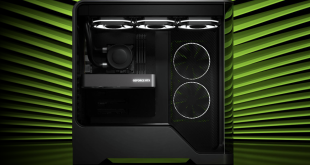The ARIA Gladiator 6300-HD7870LE is a system designed to target a very competitive price point. At only £499.99 inc vat it will certainly appeal to a wide audience of gamers who simply just can't afford to spend any more money.
While you will need to budget in the cost of an operating system, there is a good chance that an enthusiast user will already have an OS license at home, therefore the ARIA savings make sense.
Initial impressions are quite positive, the ARIAnet Triton chassis may be a no frills design but it is reasonably well made and has four USB ports on the front for easy access.
The internal build is excellent, all of the cables are well routed and ARIA have adopted the excellent, low cost Corsair CX500 power supply at the heart of the build. The system was stable throughout testing and we left it running a stress test loop overnight without an issue.
The AMD FX6300 is an excellent choice to keep the Gladiator price down, retailing at only £90 inc vat. The 6 core design is capable and ideal for a low cost gaming system. It does run out of steam a little when dealing with more serious 3D rendering and video editing duties, but when factoring in the very low price, it is hard not to be impressed.
The star of the show is the AMD HD7870 LE Tahiti GPU. ARIA have wisely budgeted around 35% of the overall Gladiator 6300 cost on the graphics card, which means the system can deal with the most demanding Direct X 11 games at 1080p with high eye candy settings. So many ‘gaming systems' fail in this regard, so ARIA do deserve some credit.
To keep the costs down, ARIA have had to use the reference AMD cooler. While it looks ugly, it can cope with the FX6300 at reference clock speeds without emitting too much noise.
The biggest issue with this system is the very slow 2.5 inch 5,400rpm mechanical hard drive. I appreciate the extra cost in adding a Solid State unit, but I really couldn't live with this 5,400 rpm drive myself long term. Windows is slowed down dramatically, and boot time is painful – much as we would expect from a drive commonly adopted in a budget laptop computer. Budgeting a little extra later for a faster OS boot drive would be my first ‘upgrade for this system at a later date.
The ARIA Gladiator 6300-HD7870LE is an excellent low cost gaming system, the HD7870 Tahiti LE card is more than capable of handling anything you can throw at it while delivering smooth frame rates. As I have already mentioned there are certainly some system weaknesses, but ARIA have ensured that enough of the budget has been invested into the ‘gaming' side of the machine. If you want a 3D rendering or video encoding rig, then look at other options which place a higher focus on the processing side.
Pros:
- well balanced for gaming.
- runs relatively cool under load.
- not too loud.
- excellent gaming performance with the latest titles.
- good value for money.
Cons:
- horrible 2.5 inch 5,400 rpm hard drive.
- reference cooling.
- you need an operating system license.
Kitguru says: A good value for money build, and it is well put together.

 KitGuru KitGuru.net – Tech News | Hardware News | Hardware Reviews | IOS | Mobile | Gaming | Graphics Cards
KitGuru KitGuru.net – Tech News | Hardware News | Hardware Reviews | IOS | Mobile | Gaming | Graphics Cards



How much extra would it have cost to include a 64GB SSD? including a 2.5 inch 5,400 rpm laptop drive seems weird.
getting a system out at £500 quid with everything ‘cool’ in it, is difficult. I think this is quite good. Maybe dropping the LE to a HD7850 and putting in an SSD would have worked out the same price, but overall a better all round performance?
@ Davis. I dont agree. its easy to upgrade with an SSD later, for say £60, and you dont have to bin the 500gb mechniacal drive in the system. the hD7850 is much weaker than a HD7870 Tahiti LE and you would have to bin the HD7850 for an upgrade later.
But if you had an SSD in the system then you could save that £60, and get another HD7850 for crossfire, they are cheap right now, that would buy half of one. and you would be faster than a single HD7870.
The CX500 can’t handle 4 PCI E connectors, it only has 2, so Crsossfire is out of the question, unless its low end hardware.
Have just received one of these systems for my son. Nicely put together. The 7870 Tahiti LE was by far the better choice as they have used a micro ATX mobo that does no support Crossfire. Installing an SSD later will be the way we go.
Also to let folk know, the system comes in the case box with the mobo box taped to the top with all the driver CD’s etc. That then comes in a bigger box with more than enough protection for a sate journey. Our one arrived with the mobo box looking like new. Looking forward to giving it a run later.